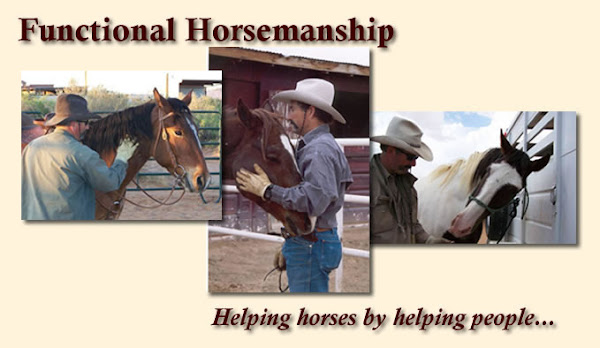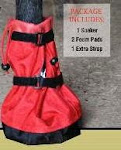I was sent this gem from four different people in the same week, so it must be good. You may have seen in across your e-mail net as well, but here it is again for all of you with gray in your hair or mustache and who still shed tears over the loss of a horse or dog. I'd like to think I'd act the same way as the Cowboy in this story..........
An old cowboy was riding his trusty horse followed by his faithful dog along an unfamiliar road.
The man was enjoying the new scenery, when he suddenly remembered dying, and realized that the dog beside him had been dead for years, as had his horse. Confused, he wondered what was happening, and where the trail was leading them.
After a while, they came to a high, white stone wall that looked like fine marble. At the top of a long hill, it was broken by a tall arch topped by a golden letter "H" that glowed in the sunlight.
Standing before it, he saw a magnificent gate in the arch that looked like mother-of-pearl, and the street that led to the gate looked like gold.
He rode toward the gate, and as he got closer, he saw a man at a desk to one side. Parched and tired out by his journey, he called out, 'Excuse me, where are we?'
'This is Heaven, sir,' the man answered.
'Wow! Would you happen to have some water?' the man asked.
'Of course, sir. Come right in, and I'll have some ice water brought right up.'
As the gate began to open, the cowboy asked, 'Can I bring my partners, too?'
'I'm sorry, sir, but we don't accept pets.'
The cowboy thought for a moment, then turned back to the road and continued riding, his dog trotting by his side.
After another long ride, at the top of another hill, he came to a dirt road leading through a ranch gate that looked as if it had never been closed. As he approached the gate, he saw a man inside, leaning against a tree and reading a book.
'Excuse me,' he called to the man. 'Do you have any water?'
'Sure, there's a pump right over there. Help yourself.'
'How about my friends here?' the traveler gestured to the dog and his horse.
'Of course! They look thirsty, too,' said the man.
The trio went through the gate, and sure enough, there was an old-fashioned hand pump with buckets beside it. The traveler filled a cup and the buckets with wonderfully cool water and took a long drink, as did his horse and dog.
When they were full, he walked back to the man who was still standing by the tree. 'What do you call this place?' the traveler asked.
'This is Heaven,' he answered.
'That's confusing,' the traveler said. 'The man down the road said that was Heaven, too.'
'Oh, you mean the place with the glitzy, gold street and fake pearly gates? That's hell.'
'Doesn't it make you angry when they use your name like that?'
'Not at all. Actually, we're happy they screen out the folks who would leave their best friends behind.'

















